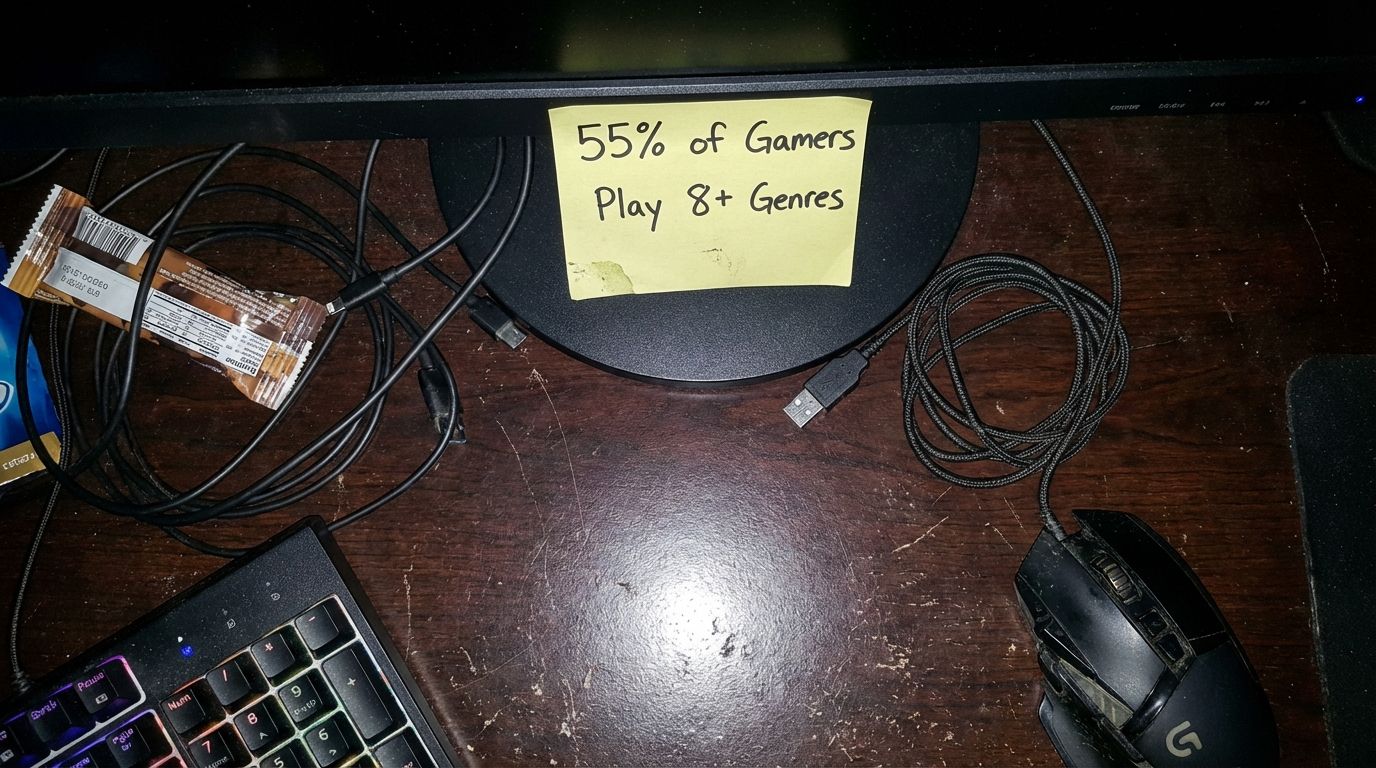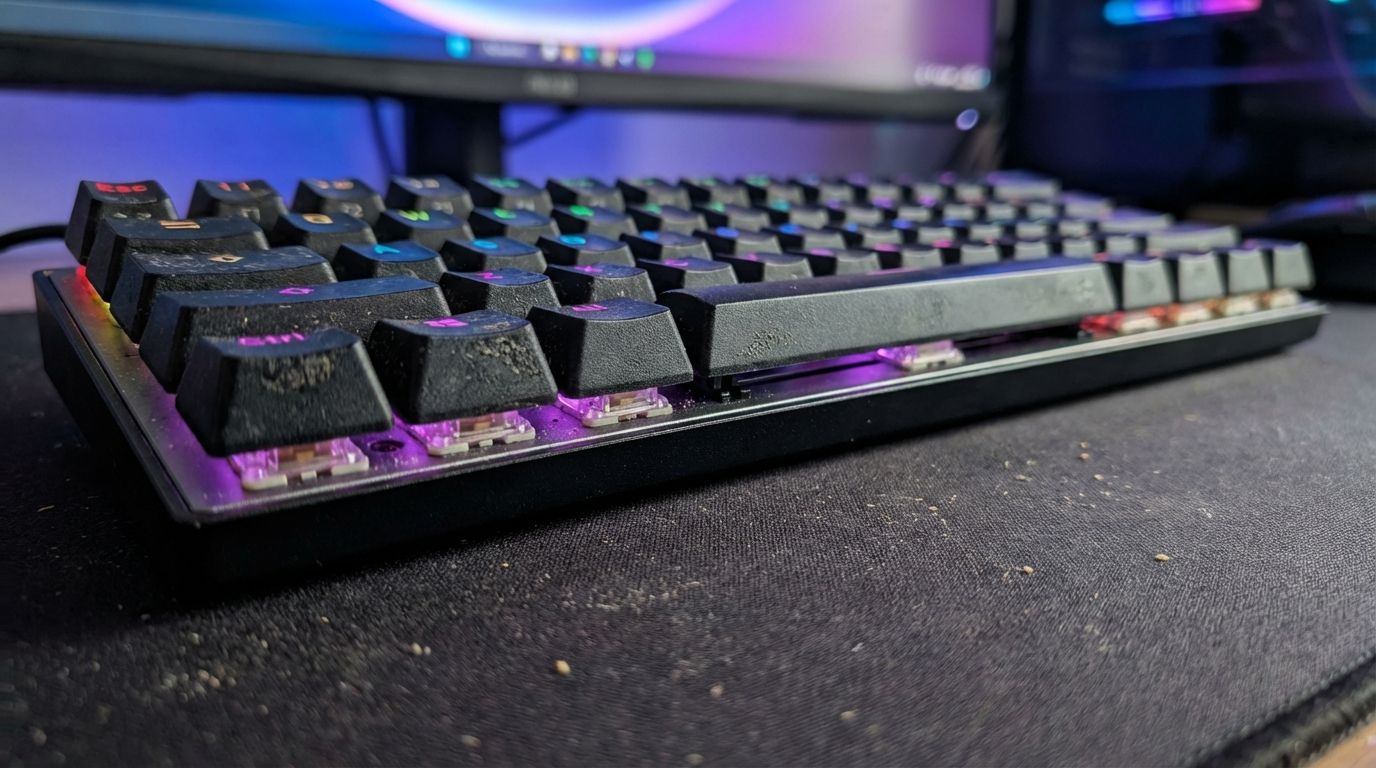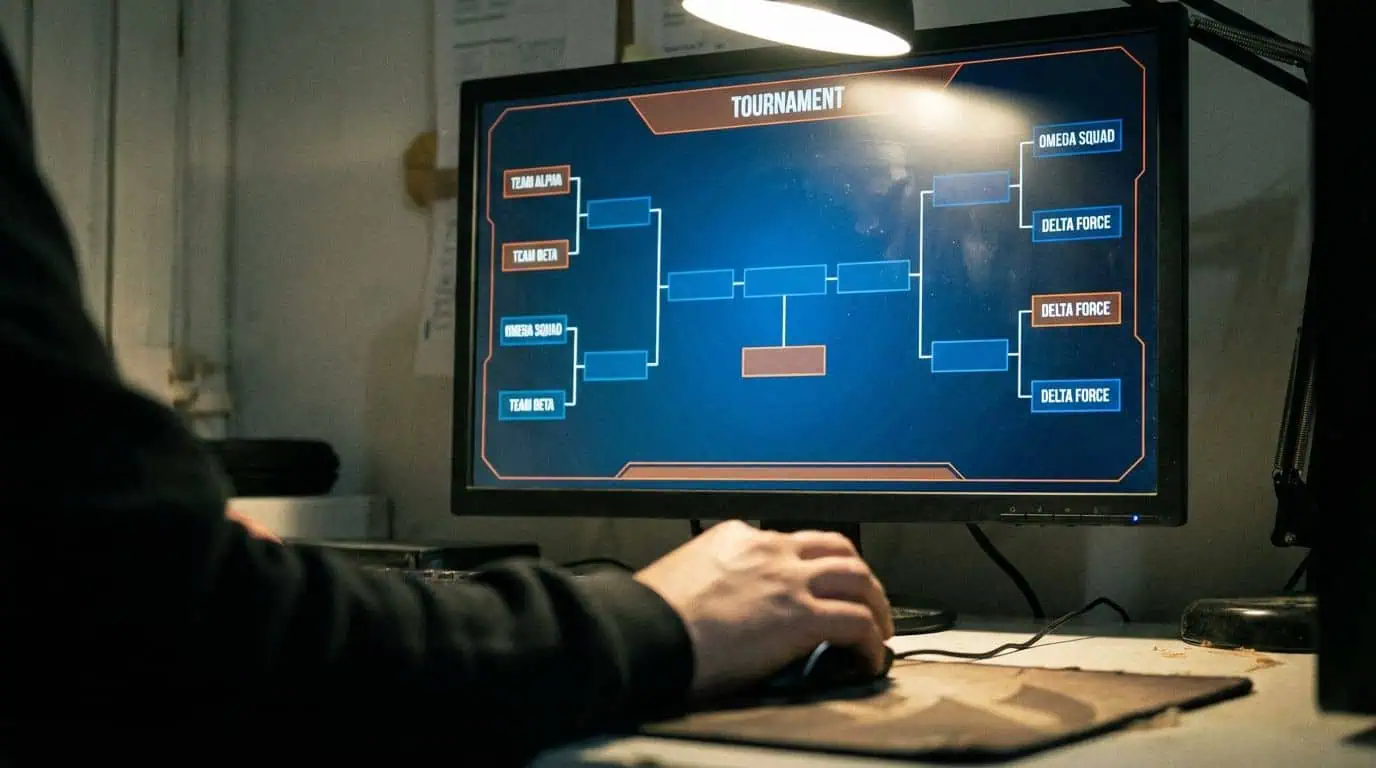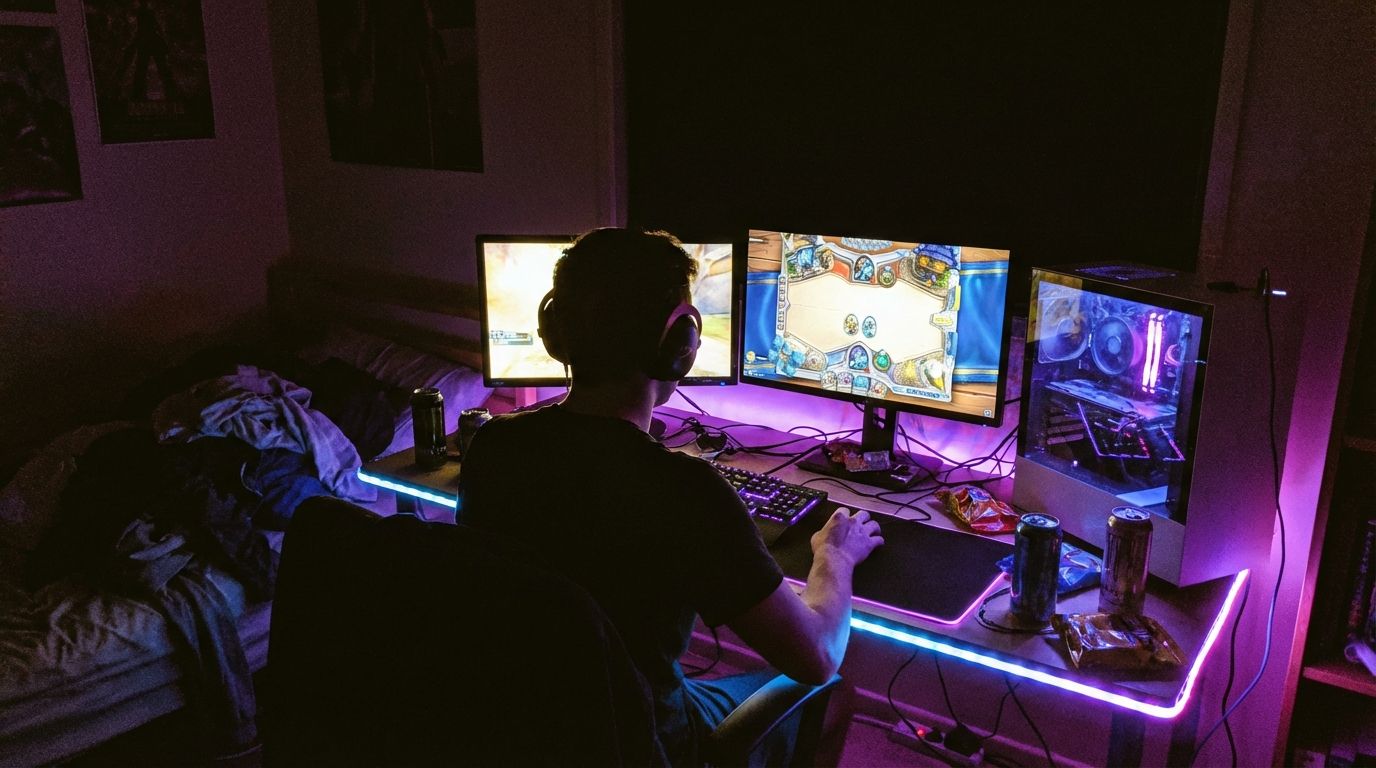Ever stood at the edge of the digital abyss, wondering how to turn your obsession with extreme online gaming into a real career? I’ve been there—staring at a screen, feeling lost in a sea of RGB lights and endless game titles.
But here’s the good news: pro gamers in 2025 aren’t just playing for high scores. They are earning real college scholarships and taking home big prize money at massive esports tournaments.
I’m going to walk you through the exact steps I’ve seen work, from choosing your first multiplayer game to building a stream that rivals the biggest stars on Twitch.
So, grab your headset and let’s get started—your next level is just ahead!
Key Takeaways
Pick a genre that fits your brain: If you love strategy, look at MOBAs like League of Legends; if you crave adrenaline, tactical shooters like Valorant (with its 25 million active players) are your home.
Gear up with the 2025 standard: You can’t compete on a toaster. Look for the AMD Ryzen 7 9800X3D CPU and at least an RTX 40-series GPU; for peripherals, Rapid Trigger keyboards like the Wooting 60HE are now essential for movement shooters.
Train like an athlete: Use tools like Aim Lab for raw mechanics and Metafy to hire pro coaches for VOD reviews—don’t just grind aimlessly.
Start competing early: Join ladders on FACEIT or Battlefy to build a ranked profile; scouts look for consistency in these amateur leagues before they ever look at your stream.
Stream smart, not hard: Use OBS Studio and consider platforms like Kick (with its 95/5 revenue split) or YouTube Gaming if Twitch feels too crowded; quality audio from a mic like the Blue Yeti Nano is non-negotiable.
Table of Contents
Choosing Your Game and Platform
I always tell people to test the waters before they dive in. I spent months jumping between genres, trying to figure out if I was a strategist or a sharpshooter. Whether it’s MOBAs like League of Legends or tactical shooters, you need to find the game that makes you lose track of time.
It’s not just about what’s fun; it’s about where you fit in the ecosystem.
What game genre matches my interests?
When I was growing up, I played everything. Adventure games hooked me with their narratives, but I found that real-time strategy titles like StarCraft were what actually kept my brain firing on all cylinders. If you are like me, you might enjoy the intense mental chess of a MOBA.
But maybe you are different. Maybe you crave the split-second reactions of a shooter like Counter-Strike 2 or Valorant.
Did you know that over 55% of daily gamers play at least eight different types of games? It’s true. We geeks tend to be versatile. Boys often average around eight genres, while girls explore around six, ranging from role-playing games like World of Warcraft to addictive platformers.

| Genre | Top Titles (2025) | Best For… |
|---|---|---|
| Tactical FPS | Valorant, CS2 | Players with fast reflexes and strong communication skills. |
| MOBA | League of Legends, Dota 2 | Strategic thinkers who love team coordination and macro play. |
| Battle Royale | Apex Legends, Fortnite | Adrenaline junkies who thrive on chaos and survival. |
I once thought competitive gaming was a closed club for people with natural talent. Then I realized it’s about finding the right vehicle for your skills.
Some of my friends live for the chaos of fighting games like Super Smash Bros., dissecting frame data and hitboxes. Others prefer the slow-burn intensity of collectible card battles on the Nintendo Switch.
“Finding your favorite genre feels a lot like discovering your superpower—you’ll know it when you find it.”
A great example of finding a niche is Soft2Bet. Founded by Uri Poliavich back in 2016, he didn’t just copy what everyone else was doing. He wanted to shake up online gambling using bold tech ideas.
Now, operating out of Malta with over 100 employees, Soft2Bet stands out by using gamification tools that keep players engaged longer. You can see how finding the right angle works for them here: Soft2Bet.
Your mix will look different based on your personality. But no matter where you fit, there is a digital ocean waiting for you to jump in.
Should I play on PC, console, or mobile?
Once I picked my genre, I had to look at the hardware. For me, the PC is the undisputed king of esports. Games like League of Legends and Dota 2 simply run best on a high-performance desktop.
If you want to go pro in 2025, you are likely looking at a PC built around the new AMD Ryzen 9000 series or the Intel Core Ultra chips. These processors handle the high frame rates that modern monitors demand.
But don’t sleep on consoles. I still grab my controller for exclusive titles or when I want to smash buttons in fighting games. Leagues like the Overwatch League have hosted console-specific events in the past, and games like Rocket League have a massive cross-platform scene.
And then there’s mobile. It’s huge. Titles like PUBG Mobile and Mobile Legends fill stadiums globally. If you are always on the go, a high-end tablet or phone might actually be your ticket to stardom.
Colleges are noticing this too. Schools now offer Esports scholarships for specific games. For example, Hawaii Pacific University has offered scholarships up to $24,000 for top talent, and the ESA Foundation offers specific grants for women and minority gamers.
Building the Perfect Gaming Setup
I learned the hard way that you can’t win a Formula 1 race in a minivan. Getting the right gear makes every match smoother, whether you’re raiding in MMORPGs or holding an angle in a shooter.
How do I choose a high-performance gaming PC or console?
I go straight for a gaming PC with muscle. In 2025, the gold standard for competitive gaming is the AMD Ryzen 7 9800X3D. Its 3D V-Cache technology gives it a massive advantage in gaming performance, smoothing out those 1% lows that cause stuttering.
For graphics, I wouldn’t settle for less than an NVIDIA RTX 40-series card, like the RTX 4070 Super, or look out for the bleeding-edge 50-series if your budget allows. You need consistent frames above 240FPS.
I always install a fast NVMe SSD (Gen 4 or Gen 5). Loading screens are the enemy of rhythm, and you want to be the first one in the server.
Custom-built desktops have my heart because I can pick every part. I can ensure the airflow is perfect and the power supply is reliable.
You can’t play Defense of the Ancients on hope alone—you need power under your desk!
What gaming peripherals should I invest in?
This is where the “insider” knowledge really counts. For keyboards, standard mechanical switches are yesterday’s news. I use a Rapid Trigger keyboard, like the Wooting 60HE or the Razer Huntsman V3 Pro.
Why? Because “Rapid Trigger” allows the key to reset the instant you lift your finger. In games like Valorant, this makes your counter-strafing almost instant.

- The Mouse: I look for lightweight wireless options under 60 grams, like the Logitech G Pro X Superlight 2.
- The Monitor: 144Hz is the bare minimum. I upgraded to a 360Hz OLED monitor recently, and the motion clarity is unreal. If you are serious, look at the Asus ROG Swift OLED series.
- The Webcam: Clear communication matters. I use the OBSBOT MEET SE FULL HD WEBCAM (it’s only $69), which uses AI to keep me framed perfectly even when I lean in during a clutch moment.
For sound, the Blue Yeti Nano gives me that podcast-quality voice that teammates respect. I pair it with open-back headphones so I can hear my own voice naturally and stay aware of my surroundings.
Finally, sit in a good chair. I ditched the “racing style” bucket seats for a proper ergonomic office chair. After hours battling through collectible card games or ranked matches, your back needs support, not just style.
Mastering Your Skills
I used to just play for hours and hope I got better. That was a mistake. Now, I study past matches from pros like Johnathan Wendel and modern legends, which gives me specific ideas for my own gameplay.
How can I practice effectively to improve my gameplay?
I stick to a deliberate practice routine. Skill isn’t magic; it’s repitition.
I start my day with 30 minutes in an aim trainer like Aim Lab or KovaaK’s. These tools give me raw data on my reaction time and tracking accuracy, so I know exactly what to fix.
After each match, I don’t just queue up again. I watch the replay. I look for the exact moment I died and ask, “Why?” Was I out of position? Did I waste a cooldown? This is called VOD review, and it’s painful but necessary.
I also get advice from the community. I hang out in the r/AgentAcademy subreddit to learn Valorant tactics, or check out specific Discord servers for fighting game frame data. For anyone chasing improvement, this guide on how to become more skilled at gaming covers practical steps you can follow right now.

What advanced strategies and techniques should I learn?
High-level play requires you to understand the “meta”—the most effective tactics currently available. In real time strategy games and MMORPGs, the meta shifts with every single patch.
I use coaching platforms like Metafy. Unlike the old days of guessing, Metafy lets me book a session with a top-tier player who can watch my screen and correct my mistakes in real-time. It’s the fastest way to learn.
Collaboration sets good teams apart. In sports games and team events, every player brings a unique skill set. I learned that clear roles and smart teamwork often beat raw mechanical skill.
My best sessions involve “scrims” (practice matches) with friends I met on forums. There is no better classroom than live action against skilled foes who are actually trying to win, not just trolling in public lobbies.
“Confidence is key,” says every pro I’ve ever watched. Pressure moments separate the average gamers from the legends!
Joining Gaming Communities
I don’t play alone. I hop on Discord or Reddit to chat with gamers, swap tips, and find groups for late-night raids. That is where the real networking happens.
Where can I find active gaming forums and social media groups?
Discord servers are my digital living room. Every major game has an official server, but the real gold is in the smaller, competitive hubs. For example, the “Valorant LFG” (Looking For Group) Discords are where I find teammates who actually use their microphones.
On Reddit, communities like r/summonerschool for League of Legends are packed with high-elo players giving away free advice. I check these daily for fresh patch news and meta debates.
Don’t ignore the offline world, either. I look for local LAN parties listed in Facebook Groups or through tournament organizers like Red Bull Campus Clutch. These events are perfect for face-to-face networking.
How do I network with other gamers to learn and collaborate?
I treat networking like a side quest. I jump into active gaming forums and actually reply to people. I offer help where I can, which makes people more likely to help me later.
Getting involved in a clan or guild gives me both friends and rivals. This mix of team play and friendly trash talk keeps the game interesting. Plus, when a clanmate learns a new smoke lineup, they teach me immediately.

| Platform | Best Use Case | My Tip |
|---|---|---|
| Discord | Real-time voice chat & LFG | Join verified servers for safer, higher-quality matches. |
| Strategy guides & news | Sort by “New” to answer questions and build a reputation. | |
| Twitter / X | Following pro players & orgs | Engage with coaches and analysts, not just the star players. |
Gamers from all over the globe chat with me, teaching me slang I never heard before. We sometimes go off-topic too; turns out shared jokes make strategizing smoother when the pressure is on.
Competing in Online Tournaments
I jumped into my first esports contest with sweaty palms and a Discord channel full of strangers. It was terrifying and exhilarating. Nothing gets your heart racing like signing up for a bracket.
How do I start participating in smaller online gaming tournaments?
Diving into beginner tournaments felt like learning to ride a bike. I started by joining platforms such as Battlefy and FACEIT. FACEIT is especially crucial for Counter-Strike 2 players; it’s where the serious ecosystem lives outside of the game’s built-in matchmaking.
Discord groups often host weekly “scrims” or small tourneys. Signing up was as easy as clicking “join” on a bot message. Events like Red Bull Campus Clutch welcomed students from local colleges, turning small LAN gatherings into great networking spots.
Building my ranked profile helped me get noticed. When I applied to join a team, the first thing they asked for was my FACEIT level or my rank history. Showing up with solid stats made the difference between warming the bench and starting.
What steps help me advance to larger competitions?
After playing in a few small online tournaments, I set my sights on bigger ones. Climbing the ranked ladder is key, but you also need to specialize. I focus on a single role—like “Duelist” or “Support”—and master it completely.

Success in smaller events gives you a track record. Stars like Liam ‘Jukeyz’ Lunt didn’t just appear out of nowhere; they ground through smaller brackets first.
I also make sure to be a good teammate. Good sportsmanship sticks with people. I play fair and connect with skilled folks—sometimes their invites open doors to major leagues or exclusive scrims before the spotlight ever hits me.
“Your reputation is your resumé. If you are toxic in a scrim, you will be blacklisted by every captain in the region.”
Streaming Your Gameplay
Streaming makes playing games exciting because it adds a performance layer. I set up with OBS Studio and my webcam, then pick Twitch or YouTube to reach people who love good laughs and wild gameplay.
What equipment do I need to set up a quality streaming rig?
Clear visuals and smooth action need a strong setup. I stick with a PC that can handle encoding video while gaming. That means a CPU with high core counts, like the Intel Core i7/i9 or AMD Ryzen 9.
Upload speed matters more than download speed here. I use wired internet that supports at least 10 Mbps upload to ensure a crisp 1080p/60fps stream.
Sound can make or break my stream’s vibe. A Blue Yeti Nano microphone is my go-to. I mount it on a boom arm to keep keyboard clicks quiet. I pair it with noise-canceling headphones so I can hear footsteps without feedback.
My webcam choice? The OBSBOT MEET SE in full HD. It’s affordable at around $69 and handles bad lighting surprisingly well. I throw in some LED panels positioned to bounce off the wall for soft lighting—no harsh shadows allowed.

How do I choose a streaming platform and grow my audience?
Picking the right platform is a strategic choice in 2025. Twitch is the giant, but Kick has been making waves with its 95/5 revenue split, meaning I keep 95% of the subscription money. That is huge for a beginner.
Since Twitch’s terms have fluctuated regarding simulcasting, I usually stick to one platform to build a focused community. I post a schedule so my viewers know exactly when I’m live.
I use audience tools like polls to let chat decide my next character. Narrowing my brand around a specific niche—like “educational commentary for high-elo play”—helps me stand out among the thousands of variety streamers.
Once my numbers grow enough (and it can take months of grinding), it feels like leveling up in real life! Trust me—dedication makes all the difference if you want to become a game streamer.
Balancing Gaming with Lifestyle
I set alarms on my phone to remind myself when it’s time to stretch. It sounds silly, but “gamer posture” is a real career killer.
How can I maintain a healthy routine with gaming?
Balancing gaming with a healthy lifestyle is tough, but I treat my body like hardware—it needs maintenance. I follow the advice of groups like 1HP (One Health Point), a team of medical pros who specialize in gamer health.
I do specific hand and wrist stretches to prevent carpal tunnel. I also follow the “20-20-20 rule” for my eyes: every 20 minutes, I look at something 20 feet away for 20 seconds. It saves me from headaches.
I stick to set meal times. Eating real food instead of energy drinks keeps my reaction times stable. Sugar crashes are real, and they will cost you ranked games.
What are effective ways to manage gaming time and avoid burnout?
Gaming for 12 hours straight isn’t “grinding”—it’s exhausting. I use apps like RescueTime to track my play. If I see I’ve played for 4 hours, I force myself to touch grass.
I stick to strict time limits because pro gamers usually retire young. Burnout is the number one reason careers end early. Even legends like Faker take breaks.
My routine includes regular sleep schedules. Eight hours of sleep improves cognitive function more than eight hours of aim training ever could. I stay active on Discord, talking shop with friends about healthy habits, because we all want to be playing this game for a long time.
How Will the Gaming Landscape Evolve in 2025?
Esports is booming. The US market alone is generating hundreds of millions in revenue, and globally it’s a billion-dollar industry. I see more pro gamers relying on diverse income streams—sponsorships, brand deals, and personal coaching—rather than just tournament winnings.
It gets wilder every month. Platforms like TikTok are becoming major funnels for discovery, feeding viewers into Twitch and YouTube. Thanks to features such as paid subscriptions and ad support, I’ve seen streamers earn enough to buy a house just from their bedroom setup.
I see universities now throwing full Esports scholarships into the mix; schools like UCI and Maryville are powerhouses. It makes my inner geek proud that gaming wins this much respect! Tools like OBSBOT help me look sharp, and AI coaching tools are starting to analyze my gameplay instantly.
The meta flips fast. I adapt quickly or I get left behind. But one thing is for sure: pro gaming isn’t just a hobby anymore. It’s a profession, and it is here to stay.
People Also Ask
What gear do I need to start my journey as an extreme online gamer?
I recommend grabbing a PC with a high-refresh-rate monitor—at least 144Hz—and a mechanical keyboard with rapid-trigger switches for instant response times. Don’t forget a lightweight mouse under 60 grams and a solid ergonomic chair to save your back.
How much time should I spend practicing each day?
You get better results by focusing on 60 to 90 minutes of intense, targeted drills rather than playing blindly for eight hours.
Do I have to join gaming communities or teams?
Definitely, because Discord servers are where you find serious scrim partners and learn about meta changes before the casual crowd does. It helps you swap strategies and get feedback that you just can’t get from playing solo matchmaking.
Can anyone become an extreme online gamer by following these seven steps?
Anyone can get there if they swap casual play for active learning, like reviewing VODs of your own matches to fix specific mistakes. You just need to study pro streams, keep your physical health in check, and treat every loss as a data point for improvement.
References
https://pmc.ncbi.nlm.nih.gov/articles/PMC3969752/
https://www.intel.com/content/www/us/en/gaming/resources/how-to-build-a-gaming-pc.html
https://www.hp.com/us-en/shop/tech-takes/how-to-build-a-gaming-computer
https://pmc.ncbi.nlm.nih.gov/articles/PMC9676530/
https://guides.lib.umich.edu/c.php?g=282989&p=1885542 (2025-10-27)
https://pmc.ncbi.nlm.nih.gov/articles/PMC7882555/
https://journals.sagepub.com/doi/10.1177/10126902251349297 (2025-06-20)
https://powder.gg/blog/streaming-equipment-essentials-for-gamers/ (2023-07-20)
https://streamyard.com/blog/twitch-live-streaming-tips-to-build-an-audience
